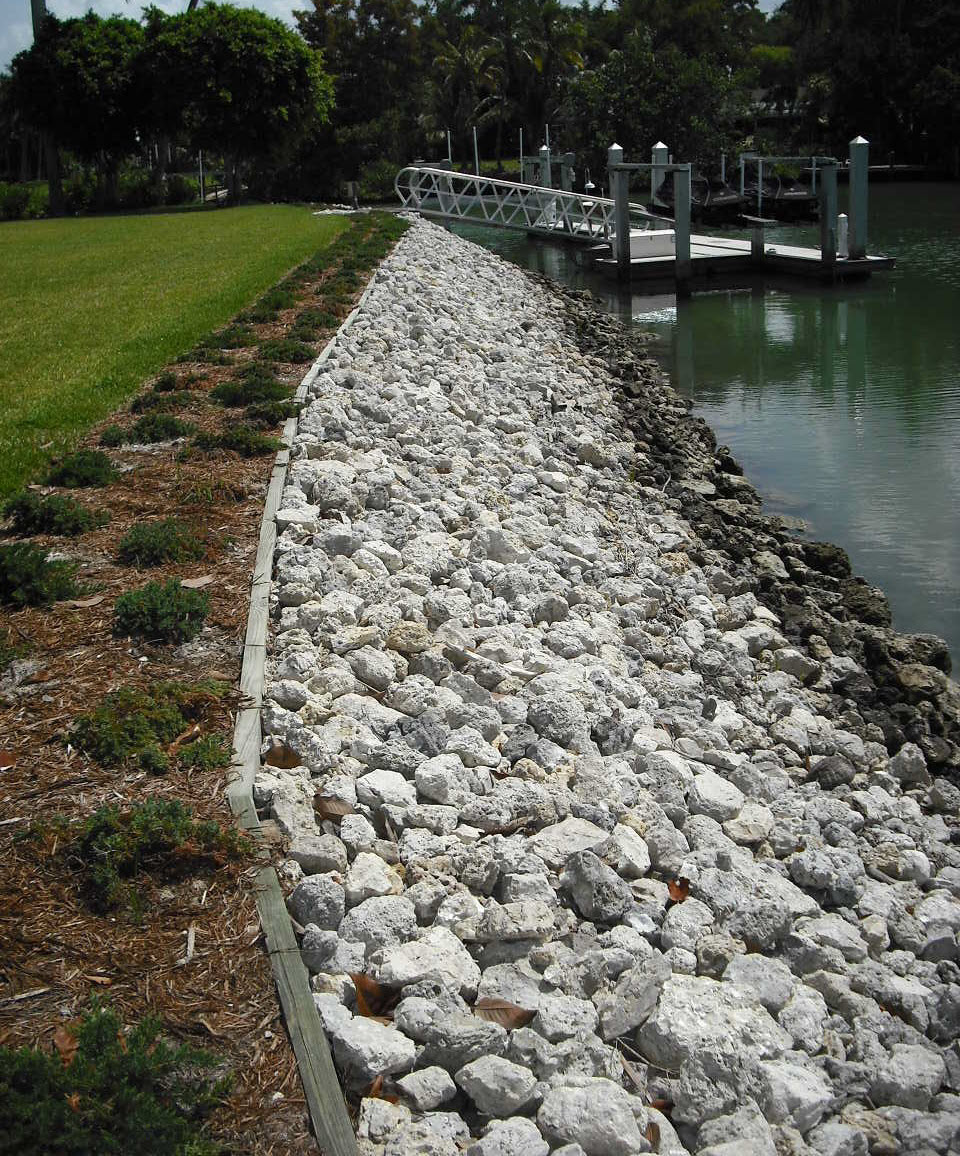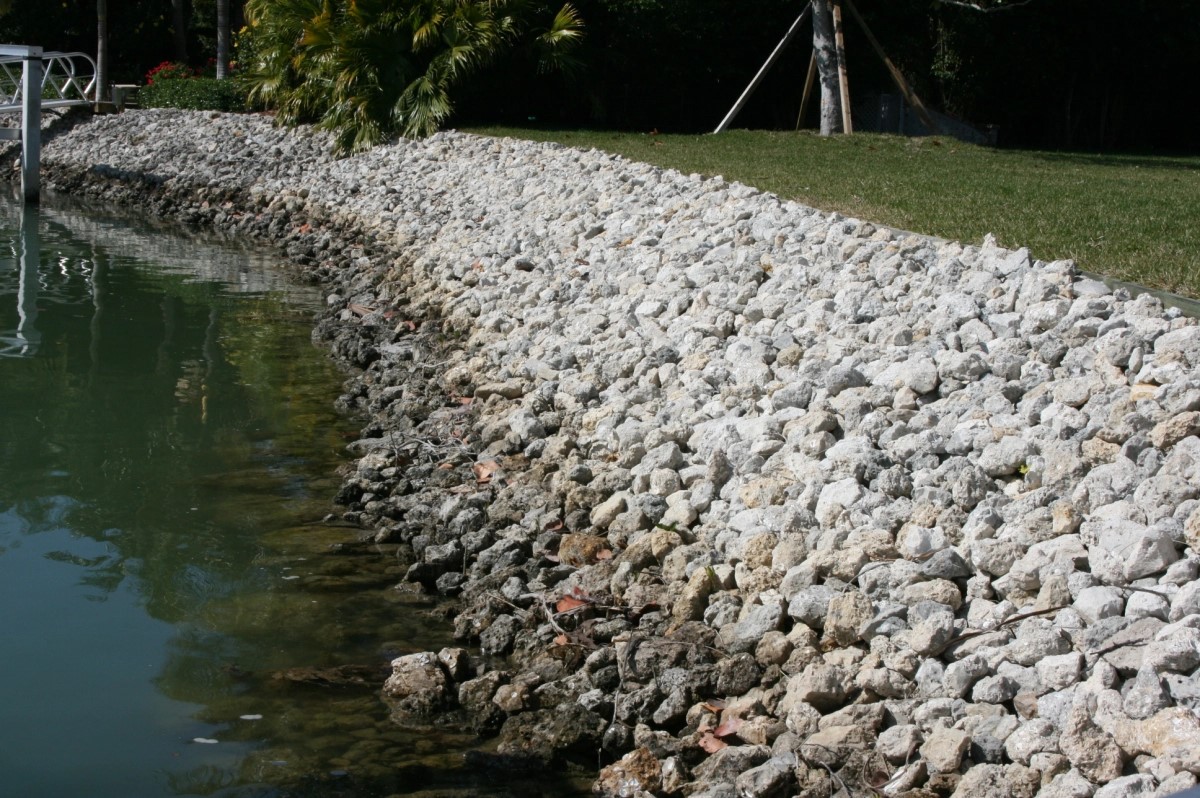Rip Rap Servicesin Richmond MI
Rip Rap Placement to Protect Your Shoreline from Erosion
We Are Locally Owned & Operated For Over 37 Years
Contact Us Today!
We Serve Businesses In And Around The Following Cities:
About Rip Rap Services
Introduction: Understanding Rip Rap in Commercial Properties in Richmond
Richmond is a city rooted in history, character, and charm. Its architecture and landscapes are iconic, displaying a rich tapestry of themes. One way property owners maintain this harmonizing balance between man-made structures and the natural world is through practical and aesthetic landscaping solutions. A popular choice is Rip Rap. This comprehensive guide unfolds what rip rap is, its installation process, the benefits it offers, and its practical applications in commercial properties in Richmond.
What is Rip Rap?
Rip rap, sometimes known as shot rock, riprap rock, rip rap stone, or stone rip rap, is a simple yet effective solution for property owners looking to manage soil erosion or runoff problems effectively. Riprap consists of a variety of rock sizes placed over a predetermined area to stabilize the soil and prevent erosion. It’s commonly utilized in shoreline restoration, landscape design, culvert construction, driveway installation, and even as a decorative function.
The Process of Rip Rap Installation
Installing rip rap begins with a careful examination of the area. To ensure precision and quality results, consider utilizing a seasoned professional service like D&J Contracting. They understand how to analyze the slope, soil type, and water flow patterns. The next step involves the careful placement of rip rap stones. These stones, which can be of varying sizes, are meticulously arranged to provide proper coverage and stability. In some instances, like rip rap shoreline restoration, using larger stones is more beneficial as they offer a higher resistance against waves and tides.
The Benefits of Rip Rap
The benefits of rip rap go far beyond aesthetic appeal. This solution effectively manages rainwater runoff, therefore safeguarding man-made structures and natural vegetation from erosion damage. Rip rap also promotes stabilized conditions in and around the area, making it safe and accessible for properties with ponds, lakes, or that reside near rivers. Rip rap’s durability is another noteworthy advantage; the stones can withstand heat, cold, wave actions, wind, and even human traffic, requiring minimal maintenance.
Businesses such as D&J Contracting offer rip rap services that extend beyond residential properties, reaching into commercial sectors. Common applications include parking lots, driveways, and loading docks. Specialized projects like rip rap rock ditch installation are also tackled with ease. They provide much-needed reinforcement to the drainage systems, ensuring sustainable functionality and longevity.
Rip Rap Application Examples in Richmond City
One can find several real-world applications of rip rap in Richmond. For instance, rip rap has been instrumental in restoring and preserving the shoreline along the famed James River. In addition, many businesses situated close to the riverfront have used rip rap for erosion control, effectively minimizing soil erosion while maintaining the natural riverside aesthetics.
Businesses with extensive outdoor space or decorative ponds often use rip rap to craft appealing landscapes. Companies such as D&J Contracting provide services tailored to meet diverse needs, from rip rap culvert construction to pond riprap reinforcement. Thus, regardless of the desired application, leveraging the benefits of rip rap could be a commendable business decision.
Final Thoughts: Offering Solutions and Enhancing Aesthetics
In reviewing rip rap’s practicality, functionality, and aesthetic potential, its popularity among Richmond’s property owners is easily understood. This highly versatile landscaping tool is not only beneficial for preserving the natural environment but can also improve the look and value of commercial properties. Rip rap continues to prove its worth time and again with sturdy, long-lasting protection against destructive elements.
From decorative landscaping to extensive erosion control, D&J Contracting is a prominent service provider in the rip rap domain. Their expert team can provide guidance on stone selection, installation, and maintenance to ensure that your property benefits from this practical and attractive landscaping option fully. With rip rap, Richmond’s commercial properties can stand strong and aesthetic against the challenges of nature.
All things considered, rip rap is not just rock; it’s a creative, functional, and sustainable way forward for Richmond’s commercial properties that value their outdoors just as much as their indoors.
Rip Rap Services Gallery


Call Us Today to receive your Free Quote for
Rip Rap in Richmond
Serving: Richmond, Michigan

About Richmond, Michigan
In 1835, Erastus Beebe set out with two brothers and several other people to create a new city out of a wilderness area in Michigan. He founded Beebe’s Corners, which in 1878 agreed to join with the two nearest neighboring communities of Ridgeway and Cooper Town to form the village of Richmond. In 1879, the Michigan Legislature officially created the village charter. In 1989, the city annexed the Muttonville area of Lenox Township, parts of Richmond Township in Macomb County, and part of Casco and Columbus Townships in St. Clair County.
Richmond is 38 miles (61 km) northeast of downtown Detroit, 16 miles (26 km) northeast of Mount Clemens, the Macomb county seat, and 26 miles (42 km) southwest of Port Huron, the St. Clair county seat. Highway M-19 passes through Richmond as its Main Street, leading north 6 miles (10 km) to Memphis and south 7 miles (11 km) to New Haven.
The city is adjacent to Richmond Township and Lenox Township in Macomb County, although it is administratively autonomous. It is also adjacent to St. Clair County’s Columbus Township and Casco Township.
According to the United States Census Bureau, Richmond has a total area of 2.92 square miles (7.56 km), of which 2.89 square miles (7.49 km) are land and 0.03 square miles (0.08 km), or 1.16%, are water.
- Muttonville is in the southeastern part of the city on the boundary with adjacent Casco Township in St. Clair County at 42°47′47″N 82°44′07″W / 42.79639°N 82.73528°W. It was so named because it was the principal slaughterhouse for what was predominantly a sheep raising area.
| Census | Pop. | Note | %± |
|---|---|---|---|
| 1880 | 750 | — | |
| 1890 | 1,074 | 43.2% | |
| 1900 | 1,133 | 5.5% | |
| 1910 | 1,277 | 12.7% | |
| 1920 | 1,303 | 2.0% | |
| 1930 | 1,493 | 14.6% | |
| 1940 | 1,722 | 15.3% | |
| 1950 | 2,025 | 17.6% | |
| 1960 | 2,667 | 31.7% | |
| 1970 | 3,234 | 21.3% | |
| 1980 | 3,536 | 9.3% | |
| 1990 | 4,141 | 17.1% | |
| 2000 | 4,897 | 18.3% | |
| 2010 | 5,735 | 17.1% | |
| 2020 | 5,878 | 2.5% | |
| U.S. Decennial Census | |||
As of the census of 2010, there were 5,735 people living in the city. The population density was 2,012.3 inhabitants per square mile (777.0/km). There were 2,479 housing units at an average density of 869.8 per square mile (335.8/km). The racial makeup of the city was 94.2% White, 1.0% African American, 0.3% Native American, 0.2% Asian, 0.2% Pacific Islander, 2.6% from other races, and 1.5% from two or more races. Hispanic or Latino of any race were 4.6% of the population.
As of the census of 2000, there were 4,897 people, 1,977 households, and 1,332 families living in the city. The population density was 1,691.6 inhabitants per square mile (653.1/km). There were 2,062 housing units at an average density of 712.3 per square mile (275.0/km). The racial makeup of the city was 95.43% White, 0.25% African American, 0.31% Native American, 0.82% Asian, 0.18% Pacific Islander, 1.86% from other races, and 1.16% from two or more races. Hispanic or Latino of any race were 4.74% of the population.
There were 1,977 households, out of which 31.9% had children under the age of 18 living with them, 53.1% were married couples living together, 10.1% had a female householder with no husband present, and 32.6% were non-families. 27.8% of all households were made up of sole individuals and 11.0% had someone living alone who was 65 years of age or older. The average household size was 2.45 and the average family size was 2.99.
In the city the population was spread out, with 24.2% under the age of 18, 9.0% from 18 to 24, 30.8% from 25 to 44, 22.7% from 45 to 64, and 13.3% who were 65 years of age or older. The median age was 36 years. For every 100 females there were 92.1 males. For every 100 females age 18 and over, there were 89.6 males.
The median income for a household in the city was $43,378, and the median income for a family was $57,917. Males had a median income of $41,519 versus $26,445 for females. The per capita income for the city was $21,384. About 4.8% of families and 6.2% of the population were below the poverty line, including 7.2% of those under age 18 and 5.4% of those age 65 or over.
The Richmond Community School District covers areas of Richmond, Lenox, Casco, and Columbus townships. It includes an elementary, middle, and high school. In 2002, it had approximately 2,000 full-time students and a teacher/student ratio of 1:20. St. Augustine is a Catholic Elementary School in the city and St. Peter’s is a Lutheran Elementary School in the city.
Call Us Today to receive your Free Quote for
Rip Rap in Richmond
Related Services in Richmond, Michigan
We Serve Businesses In The Following Zip Codes:
48007, 48015, 48021, 48026, 48035, 48036, 48038, 48042, 48043, 48044, 48045, 48046, 48047, 48048, 48050, 48051, 48066, 48071, 48080, 48081, 48082, 48083, 48084, 48085, 48088, 48089, 48090, 48091, 48092, 48093, 48098, 48099, 48225, 48230, 48236, 48310, 48311, 48312, 48313, 48314, 48315, 48316, 48317, 48318, 48397